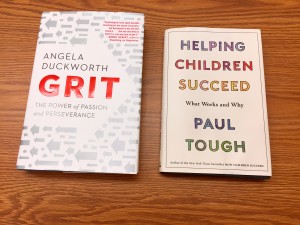Whenever I think about school improvement goals I begin with assessing where we are. Where are we with our previous learning goals? Do we need to add or fine-tune the intent of, or actions towards, those efforts? I don’t want new just for the sake of cool- sounding goals that feed off the latest buzz. I am cautious of following the pack of Twitter feeds or NY Times bestsellers unless they continue to inform or improve on our current learning journey. So when I reflected and learned and reflected some more this summer, I was forever mindful of this concern. New for the sake of new is just another thing and we all know that educators have a lot of “things” to consider as we prepare for a new school year.
For the last couple of years we have focused on increasing opportunities for students and staff to be more innovative. We have learned that this is a complex undertaking and involves many aspects of change. This initiative encourages more student-centered learning, more differentiation, more acts of student and teacher independence, more project-based learning, improving feedback and encouraging a growth mindset, and perhaps most importantly, a need for teachers to take a leap of faith and embrace change for the sake of improving our students’ educational experience. Gone are the days of learning content just for the sake of acquisition – we now (more importantly) are interested in what students (and teachers) can do with their knowledge.
To help us with this endeavor we have read books and articles and watched TED Talks by the following researchers: Tony Wagner, Carol Dweck, Daniel Pink, Angela Duckworth, Paul Tough, Amanda Ripley, Dan Meyers, George Couros, Adam Grant, and Kenneth Robinson.
Their work has informed our thinking and helped us to develop a staff culture as leaders and innovators. We have learned to:
- Try new teaching techniques (even when they don’t come with a road map)
- Provide students with more voice and choice
- Work through the struggle of change efforts toward improvement
- Trust that our students are capable of more than we ever imagined if we provide them with the right opportunities to grow and learn
We’ve learned a lot in the past few years. And because we’ve learned a lot we need time to process the learning, and to reflect and fine-tune our current efforts. Because, let’s face it, these efforts are complicated. All of the above mentioned research is heady. The research encourages a make-over: for some, it requires a change in philosophy, and certainly for most a shift in thinking. Gone are the days of following a curriculum in lockstep fashion. We want teachers to create, to innovate and iterate all in an effort to stay current and provide each and every student in our care the best educational experience we can muster.
This past summer I read Paul Tough’s new book Helping Children Succeed and Angela Duckworth’s Grit.
Both of these books helped me to reflect and fine-tune our current school improvement goal to provide our students with more engaging learning experiences by planning activities that encourage creativity and empower student’s unique learning objectives.
Neither of these books are directly correlated to providing students with opportunities of innovation (Characteristics of the Innovator’s Mindset @gcouros), but they both speak of the importance of our classroom/school environment, which is directly related to these goal efforts. When we began our goal to provide students with more opportunities to be innovative (to improve on or create something new and better) the idea was that our isolated Innovation Time would begin to spill over into our classroom/school culture to effect a more lasting change in practice. I believe we are on a path towards improved classroom/school culture, but we need further work.
Specifically, Tough’s book refers to creating safe classroom environments where students’ thoughts and unique capabilities are valued and considered each and every day. And recognizing that students come to school with not only varied skills, but varied capacities for learning. Most importantly, he espouses that these capacities are not fixed. They can be nurtured and improved on with skilled teaching efforts. He notes that teaching skills like perseverance and resilience come from creating opportunities for students to experience these characteristics through events, not by direct instruction. By allowing students time to work through learning endeavors that are meaningful (and challenging) to them we are providing them experiences that will teach them the importance of these 21st century skills.
Duckworth’s book Grit shares the body of her research on what makes some people more “gritty” than others and probes whether or not we can teach grit or encourage children to be more gritty. She describes grit as a path from interest to practice to purpose to hope. This path is similar to what Tony Wagner describes as the path to innovation: play to passion to purpose and also very like Pink’s path of Drive: autonomy-mastery-purpose.
The chapter of Grit I most enjoyed was chapter 7: “Practice.” This chapter describes the importance of deliberate practice. What we often do in schools is to provide students with repetitious practice:here’s the formula, here’s an example of how to apply it, now you practice it (with similar examples of the application), again and again and again. And then we wonder why many of our students don’t improve their skills or apply them independently, even when during this repetitious practice they are often not receiving enough direct coaching from a teacher. Duckworth writes about the importance of deliberate practice, which she describes as specific feedback in an effort to improve performance. She uses the analogy of a runner who runs every day for years with the same technique and effort and wonders why their performance remains stagnant. And yet if the runner is coached with specific individualized feedback geared to fine-tuning their skill their running performance improves. Why do our students often miss these differentiated experiences for learning and instead receive assignments and activities that provide them with repetitious practice?
Creating classroom/school environments that offer consistent “coaching” towards improved performance will help foster innovation in that it will emphasize the need to provide students with time to explore their interests together with the need to create purposeful learning endeavors for improved outcomes.


